Enhancing C-Store customer experience with digital signage

C-Stores just keep getting more techno. Last week QuikTrip in Tulsa opened new location with "Just Walk Out" technology. Circle K is going facial. 7-Eleven experiments with holograms. C-Stores deliver now these days too. For size, figure 130,000 C-stores. Restaurants are around 600,000 (McDonalds is 15,000 of those).
7-Eleven hires marketing and design people from Starbucks, and it shows.
C-Stores have an outdoor component much like the drive-thru component of McDonalds.
The "digital signage" screens and ads that Gilbarco/others have tried to incorporate into the gas pumps have never worked and the clerks generally turn the audio off. The holy grail for C-Stores is how they c
ould sell lottery tickets right at the pump. But that will never be...
Meanwhile, new designs are being deployed for the store interior and assisting the C-Store into becoming its own QSR, and QSRs definitely like digital signage. The restaurants are definitely feeling the pressure. Sometimes I wonder if I should just become a parking lot consultant and listen to Joni Mitchell all day...
Seriously though this is a good insight article by Samsung (with my usual annotations) I want to share this week. Main content by: Fiona Briggs
In order to regain sales momentum, leading convenience stores are using digital solutions to provide shoppers with more convenient fulfillment services, including drive-thru, curbside pickup and delivery options — increasing customer satisfaction and retention as well as their basket size. Stores are also launching new loyalty programs and apps to offer advanced ordering options, personalization and a fully contactless customer experience.
These new services and technologies give convenience store customers the opportunity to shop how they want to shop. This is key, since service speed and wait time remain top priorities for consumers, according to a Bluedot survey of more than 1,800 U.S. consumers. Digital signage facilitates a stress-free customer experience, accelerating their journey into and out of the store. At gas station pumps and marquees, for instance, outdoor LED screens can welcome drivers onto the forecourt, then direct them inside or to the drive-thru with vibrant imagery and messaging.
Guiding the customer journey with digital signage
When it comes to drive-thru service, speed is the name of the game. Among customers surveyed by Bluedot, 85 percent said they’ll leave a store if the drive-thru line is too long. But how long is too long? According to consumers, an acceptable wait time at a drive-thru is six minutes — 40 percent faster than the answer of 10 minutes in August 2020.
High-brightness outdoor displays can be used to create digital menu boards, which help speed service and reduce wait times. Window displays, such as Samsung’s OMN-D Series, can also spotlight promotions, which you can tailor to each part of the day to help customers make quicker decisions. Surveyed consumers say that modern menu boards that confirm their orders are a top reason they’ll revisit a particular store.
Convenience stores like Wawa have partnered with leading third-party online ordering providers: Uber Eats, DoorDash, Grubhub and Postmates. Other stores have created a proprietary app for advance ordering, allowing for a contactless experience at the window and offering additional convenience — and safety — for drivers and their passengers.
With food away from home currently outpacing food at home in the U.S. market, to-go orders are predicted to return to pre-COVID levels in the second half of 2022. Drive-thru, pick-up and delivery services will remain key, especially as consumers place larger than average orders at the drive-thru window.
Creating personalized experiences
Customer engagement via new loyalty programs and apps will help ensure your stores meet shoppers’ needs. You can use these new programs to deliver timely, relevant messaging, such as a promotion for a healthy snack during the week or a treat on the weekend.
Fuel pay apps, for instance, allow customers who just need some gas to quickly pay with the app and get back on the road. Meanwhile, loyalty programs like Punchh allow convenience stores to deliver personalized experiences, aiming to convert fuel-only customers to in-store customers, or increase basket size for regular shoppers. NACS data shows convenience store basket size increased by 18 percent in 2020 as shoppers chose local convenience stores to fulfill their daily shopping needs.
Inside the store, indoor LED signage can be deployed to promote your food and beverage offerings. And behind your service counters, TVs can share customized food and beverage content and local menu specialties. Research shows consumers have an appetite for personalized deals and offers and appreciate displays that update them on their loyalty points and available coupons.
Self-service kiosks with touchscreen ordering further speed up the customer journey and enable additional personalization. You can also save on labor costs and enjoy increased order accuracy.
Well-developed digital loyalty, communications, ordering and display systems offer significant advantages for convenience retailers looking to outsmart the competition. With these digital solutions in hand, operators can engage with customers whenever — and however — they choose to shop.
As you plan a digital signage strategy for your business, you can ensure greater success with an integrated content management system (CMS). Find out how to configure and tailor real-time messaging on your screens with this complete guide [by Samsung]. For reference here is link to Samsung’s full lineup of digital signage solutions for food and beverage operations.
More Information and Resources

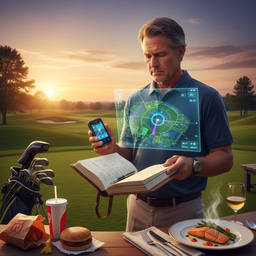
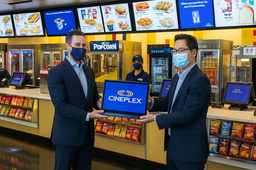
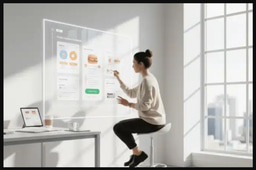
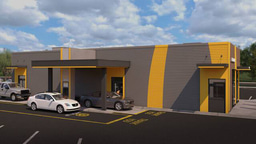
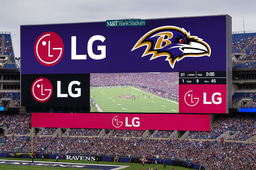
Please sign in or register for FREE
If you are a registered user on AVIXA Xchange, please sign in